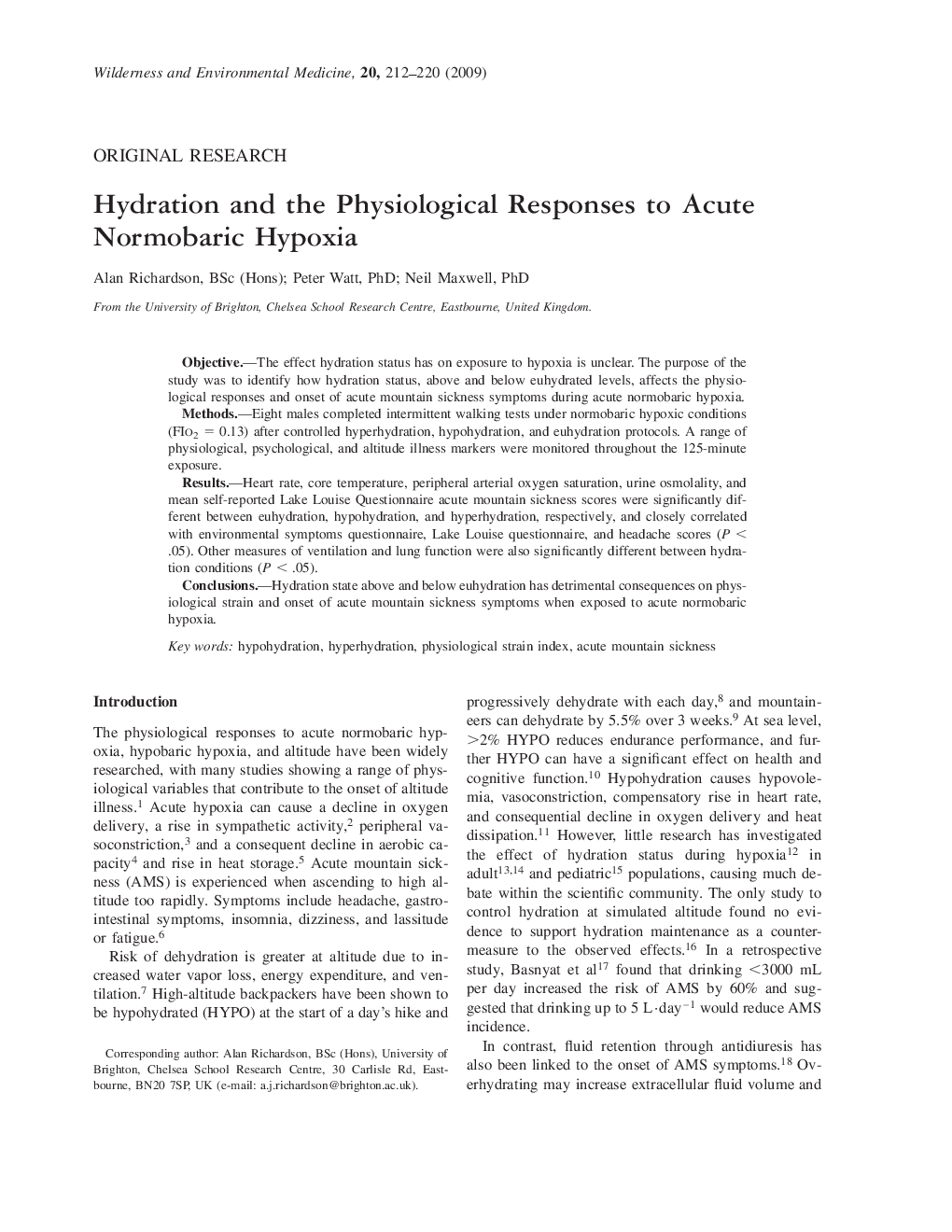| Article ID | Journal | Published Year | Pages | File Type |
|---|---|---|---|---|
| 2615560 | Wilderness & Environmental Medicine | 2009 | 9 Pages |
ObjectiveThe effect hydration status has on exposure to hypoxia is unclear. The purpose of the study was to identify how hydration status, above and below euhydrated levels, affects the physiological responses and onset of acute mountain sickness symptoms during acute normobaric hypoxia.MethodsEight males completed intermittent walking tests under normobaric hypoxic conditions (FIo2 = 0.13) after controlled hyperhydration, hypohydration, and euhydration protocols. A range of physiological, psychological, and altitude illness markers were monitored throughout the 125-minute exposure.ResultsHeart rate, core temperature, peripheral arterial oxygen saturation, urine osmolality, and mean self-reported Lake Louise Questionnaire acute mountain sickness scores were significantly different between euhydration, hypohydration, and hyperhydration, respectively, and closely correlated with environmental symptoms questionnaire, Lake Louise questionnaire, and headache scores (P < .05). Other measures of ventilation and lung function were also significantly different between hydration conditions (P < .05).ConclusionsHydration state above and below euhydration has detrimental consequences on physiological strain and onset of acute mountain sickness symptoms when exposed to acute normobaric hypoxia.
